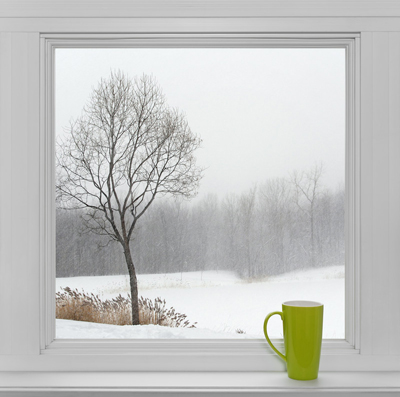Insulating Windows, Insulation Values
Soundproof Windows Also Act as Insulating Windows
- Our insulating windows will pay for themselves with dollars saved from reduced energy costs
- Cut your window heating/cooling by 50% or more
- Stop air infiltration – a huge additional energy savings
- You can now “insulate” your insulating windows
- Stop or reduce condensation
Specifics on Insulating Windows
- Adds 2.5 or more to your existing R value
- 3.84 R value behind single paned window with 1.5″ air space separation.
- 0.26 U value behind single paned window with 1.5″ air space separation
- 0.38Cfm/ft crack – air infiltration rate by itself
- 0.15 to Nil Cfm/ft crack – air infiltration rate when combined with existing window
Two major factors contribute significantly to the overall insulation value of windows:
- Basic insulation value of the window unit(s).
- Air infiltration around and through window seals.

Insulation Values of Soundproof Windows
By increasing the window insulation R value by 2.5, your BTU loss through your windows will be substantially reduced. The window BTU heat loss will be reduced by approximately 77% or more for single paned windows and approximately 50% for dual paned windows (See BTU loss chart below).
The insulation values are better because of the air space and the thermal break between the two windows.
There is also a special effect peculiar to the behavior of air that makes a 1.5 inch air space between two windows significantly better than a sealed air space of less than an inch.
An air pocket or bubble ‘adheres’ to glass and is increased or diminished with wind. This is the major reason glass has ANY insulating value. With a single pane of glass there are two air bubbles; with dual pane units, there are three air bubbles (or four if it is triple glazed). However, with a second window acting as an insulating window, you have five bubbles with single paned windows if the air space is more than 1 inch. They are the inside and outside of each window plus the air space between the two windows. Since the windows are more than an inch apart, the bubbles do not ‘connect’ and become one bubble, like they do with dual paned glass with less than an inch of air space.
This is also a major factor needed to reduce condensation.
BTU Losses and Insulation Values *
|
Insulation
Values |
BTU Loss Per Month
|
||||
|
Inside
Temperature 70° F |
|||||
|
R
Value |
U
Value |
Average Outside Temperature
|
|||
|
Window Description
|
(1/R)
|
40° F
|
30° F
|
Pct
Reduction |
|
|
Single pane glass
|
1.15
|
0.869
|
2,981,000
|
3,971,000
|
0%
|
|
Dual pane glass with 1/2″ air space
|
1.81
|
0.55
|
1,426,000
|
1,901,000
|
53%
|
|
Insulating Soundproof Window over single pane window with 1.5″ air space
|
3.84
|
0.26
|
674,000
|
899,000
|
77%
|
|
Insulating Soundproof Window over dual pane window with 1.5″ air space (estimated)
|
4.40
|
0.23
|
600,000
|
800,000
|
80%
|
* Does NOT include air infiltration losses. BTU loss calculations based on average home with 120 square feet of glass.
